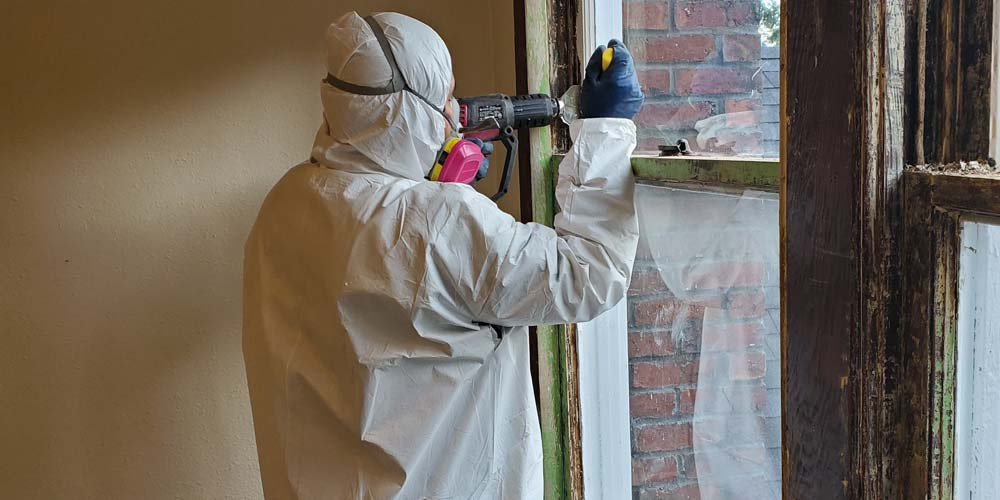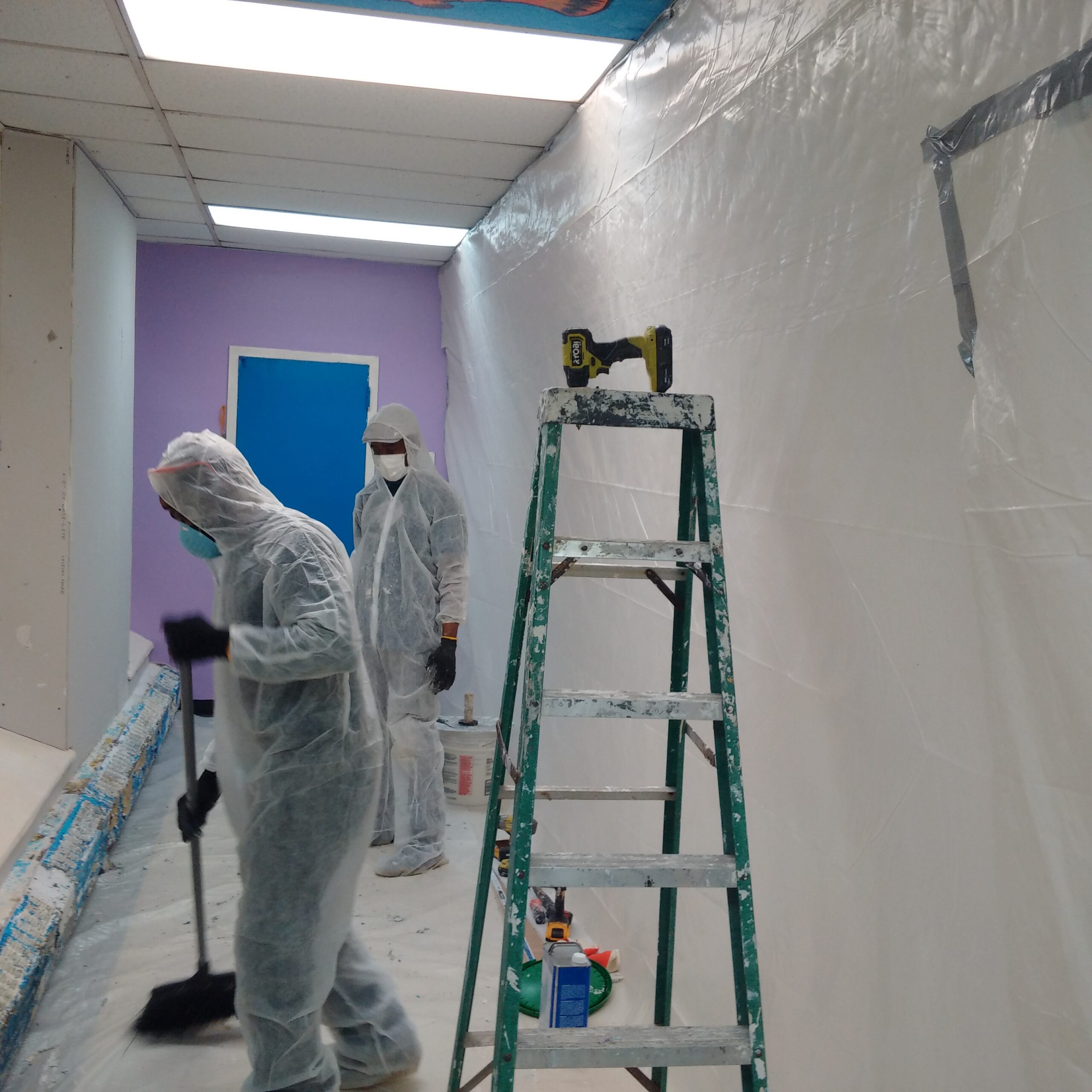Comprehensive Lead Paint Removal Service in NYC-- Certified and Qualified
Comprehensive Lead Paint Removal Service in NYC-- Certified and Qualified
Blog Article
Finest Practices for Making Sure Safe and Comprehensive Lead Infraction Abatement
Resolving lead infraction reduction needs a multi-faceted strategy to make sure both safety and security and compliance. It's the last clearance process, involving detailed evaluations and laboratory screening, that really confirms a lead-free environment, making sure lasting safety. Exactly how do these techniques adjoin to assure comprehensive lead abatement?

Preliminary Evaluation
Conducting an initial assessment is a crucial initial step in lead offense abatement. This phase incorporates a comprehensive assessment of the residential or commercial property to determine the presence, extent, and certain areas of lead-based dangers. Certified specialists, such as licensed lead inspectors or take the chance of assessors, should perform a detailed website assessment, using devices like X-ray fluorescence (XRF) analyzers to accurately detect and determine lead concentrations in paint, dust, dirt, and water.
The assessment must additionally include a review of the structure's background, previous records, and any type of issues or wellness problems reported by residents - Lead Removal Contractors. Recording the searchings for thoroughly is crucial, as these records create the basis for developing a reliable reduction approach. A detailed assessment also includes sampling and laboratory analysis, which are crucial to verify the existence of lead and guide succeeding actions
Furthermore, it is vital to communicate the outcomes transparently to all stakeholders, consisting of homeowner, occupants, and regulatory authorities. By making certain that the first analysis is performed with accuracy and roughness, professionals can lay a strong structure for a targeted and efficient lead abatement process, ultimately protecting public health and wellness and making certain conformity with regulatory requirements.
Appropriate Control
Proper control is important to avoid the spread of lead contaminants throughout abatement tasks. Efficiently handling containment lessens the risk of lead dirt and particles moving to non-work locations, therefore securing both the setting and individuals outside the immediate work area. To accomplish correct control, a closed obstacle of plastic sheet need to be established around the workplace, ensuring all joints and edges are securely sealed. Lead Removal Contractors. This barrier must expand from flooring to ceiling and be taped to prevent any kind of leakages.

Routine examinations of the control location are necessary to look for breaches or weak points in the barrier. Any type of identified problems ought to be immediately addressed to preserve the stability of the control. By adhering to these practices, abatement projects can efficiently control lead contamination and alleviate associated health and wellness risks.
Worker Protection
Making sure worker security is vital throughout lead abatement tasks to avoid work direct exposure to unsafe lead bits. Vital actions consist of making use of individual protective tools (PPE) such as respirators, gloves, and full-body matches specifically developed to obstruct lead dirt and fumes. Workers need to go through extensive training on the appropriate usage and maintenance of PPE, including fit screening for respirators to ensure maximum efficacy.
Design controls, such as local exhaust air flow systems, are vital in minimizing airborne lead concentrations in the job atmosphere. Administrative controls need to additionally be carried out, consisting of limiting the period of exposure and revolving workers to lower private exposure times. Routine clinical monitoring and biological tracking are vital for early detection of lead absorption, allowing prompt intervention and treatment.
Moreover, establishing a decontamination protocol is essential. Employees check it out need to follow rigorous decontamination treatments before breaks and at the end of their change to stop lead dirt from being brought outside the workspace. This includes extensive hand and face cleaning with lead-specific cleaning agents and altering out of polluted clothes.
Meticulous Clean-up
Keeping a risk-free job atmosphere extends beyond employee protection and incorporates thorough clean-up to make certain lead particles are extensively removed from the site. The process of meticulous clean-up is essential in stopping the recontamination of the moderated location and safeguarding both present and future occupants.
To achieve a detailed cleanup, all work areas should be methodically decontaminated. This includes using specialized HEPA (High-Efficiency Particulate Air) vacuum and wet-wiping techniques to capture and get rid of great lead dirt that might have settled on surface areas. It is crucial to clean all horizontal surface areas, consisting of floors, window sills, and countertops, as well as vertical surfaces that might have entraped lead fragments.
Workers need to use proper personal protective devices (PPE) throughout cleaning to prevent exposure to residual lead useful reference dust. Used cleaning materials such as wipes, sponges, and mop heads need to be dealt with according to unsafe waste disposal regulations.

Final Clearance
Last clearance is the important wrapping up stage of lead abatement that figures out whether the website is secure for reoccupation. This important step includes comprehensive inspection and testing to verify that all lead threats have been properly gotten rid of. The process begins with a visual inspection by a qualified lead-based paint assessor or danger assessor to make sure no visible dust or debris continues to be. This is followed by gathering dust wipe examples from numerous surface areas, including floorings, windowsills, and other horizontal surfaces. Lead Removal Contractors.

Last clearance testing not just safeguards future passengers yet additionally guarantees compliance with neighborhood, state, and government regulations. It offers as a recorded recognition of the reduction specialist's adherence to market ideal techniques. Guaranteeing a complete and successful last clearance is important in guarding public health and cultivating rely on the reduction procedure.
Conclusion
Making sure secure and complete lead infraction abatement demands a complex technique incorporating initial assessments with innovative detection methods, reliable you can try here containment strategies, stringent worker defense procedures, and thorough clean-up treatments. The final clearance phase, featuring detailed examinations and research laboratory screening, is important to verify conformity with EPA criteria. Adherence to these ideal practices assures a safe setting for passengers, alleviates health dangers, and supports regulative demands, therefore advertising public health and safety and security in lead-affected locations.
Report this page